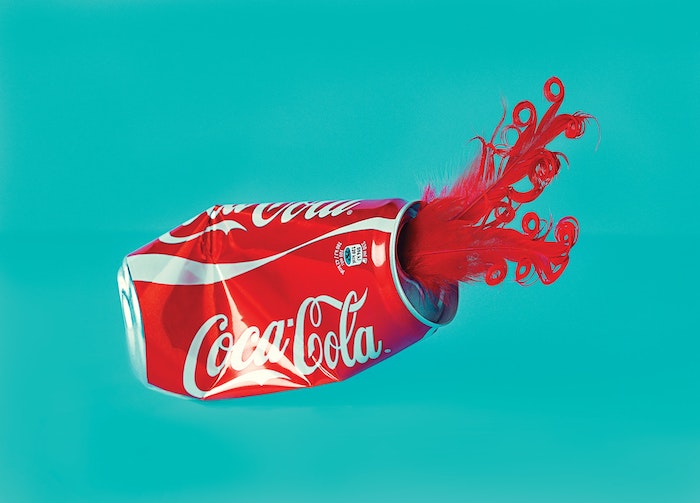

What is brand equity?
Brand equity is the value premium a brand achieves based on how consumers perceive and value the company. A company with a well-known brand name and strong brand equity can command higher prices for its products and services even if competitors offer cheaper products and services.

Ever wonder what makes customers want to pay more for one brand over another? Or what prompts them to buy every product launched by a brand even when they don’t need the product?
That’s the power of brand equity at work.
Brand equity is heavily influenced by marketing psychology and by a company’s reputation for service and product quality.
Brand equity can make or break your brand.
This guide explores why brand equity should be a part of your branding strategy and how small business owners and marketers can use it to fuel growth.
Powerfully simple strategy for business growth

Our brand identity workbook has actionable insights and steps to help you build a strong brand identity.
We just emailed the brand identity workbook to you.
What are the five elements of brand equity?
The core components of brand equity are:
Brand recognition
The most critical question in brand recognition is whether a person recognizes a brand when seeing a company’s branding. For example, what comes to your mind when you see a “swoosh”? Did you think of Nike? If you did, that’s brand recognition.
If consistent and executed well, your brand’s visual identity will strengthen brand recognition.
Brand recognition will be difficult if you’re starting a new business because people won’t know anything about your business. That’s why strong brand identity is so vital to new companies. Strong identity helps to build brand recognition.
Brand perception
Brand perception isn’t what your company says it does – it’s what customers perceive you do.
Most brands have recognizable features that identify a product as belonging to a particular brand. For example, many people could easily recognize products created by Apple even if those products didn’t have an Apple logo. Apple’s brand perception is so strong that other companies often try to design products to reflect the highest standards for design to make consumers think Apple created those products.
Brand perception also includes brand awareness – your unique selling proposition. Brand awareness is about knowledge, values, and beliefs. What do consumers think of your brand? What do they say your brand is about? Netflix, for example, has a “reputation for competence,” according to a 2021 study by Pulsar.
Brand image
Brand image is a feeling, so the most crucial question is how your brand makes people feel. For example, Disney has spent a lot of money telling people that the happiest place on earth is Disneyland. And, not surprisingly, Disneyland has a strong brand image among families with younger children.
If your brand image is weak or tarnished, consider a rebrand. Even successful brands rebrand periodically to align their brand image with their vision.
Brand value
Do consumers think your product or service is worth the price they pay? Would customers spend more money on your products or services than cheaper alternatives?
According to BrandFinance, Apple is the world’s most valuable brand in 2022. Apple makes terrific, high-priced products and has a very loyal customer base. It’s no wonder people line up for the latest Apple gadget, no matter how ridiculously high the price tag!
Why is brand equity important?
Brand equity directly impacts your company’s sales, profits, and growth. And it affects your return on investment (ROI) across your marketing campaigns.
Strong brand equity helps small businesses and startups to do the following:
Mark-up and charge a premium price
Customers who trust your brand are willing to pay more. They will not think twice about spending top dollar on your products and services because they associate your brand with quality.
More successful product launches
People are drawn to and will seek to replicate positive experiences. This is why we all have “favorites” – a favorite snack brand, a favorite shirt, and so on.
And when customers associate your brand with positivity, they become more open to trying and buying new products or services because they expect to get that same level of quality and experience they received previously.
Reduced ad spend
When customers have a positive experience with a brand, they usually don’t need prodding or convincing to return and repurchase. Your brand equity will do the heavy lifting for you.
Bigger profit margins
You can achieve higher profit margins by charging more for your products and services while spending less money on marketing.
Increased order value per customer
Positive brand equity inspires brand loyalty. Customers are more inclined to try your company’s other products and services. This makes up-selling and cross-selling easier. And, as your customers buy more products and services, your customer lifetime value will increase.
Better customer retention
Customers who believe in the value of a brand will keep coming back. They’ll do so because of convenience, familiarity, and, more importantly, loyalty.
Loyal customers will have your brand on “top of the mind” and the first option when it’s time to repurchase.
Brand ambassadors
Never underestimate the power of a referral. Positive brand equity mobilizes your customers to become ambassadors for your brand. They will voluntarily recommend your brand to others because they want to share positive experiences with their friends and family.
How can your business improve brand equity?
Brand equity is an essential element in a company’s branding strategy. To build valuable brand equity, companies must nurture a genuine rapport and develop trust with their target audience.
Here are four actionable strategies for building your brand equity:
1. Create greater and more consistent brand awareness
You must ensure that your customers and prospects recognize your brand among a sea of competitors. Here are a few good ways to do this:
- Choose and use a unique company logo to represent your brand.
- Create a brand style guide to ensure that your brand looks consistent on your business website, social media, and print.
- Show and tell the real story behind your brand.
- Identify and communicate your brand’s unique value proposition (also called unique selling proposition).
- Consistent and timely communication with your customers and prospects via email, newsletters, social media, and other channels.
2. Communicate what your brand stands for
Think about how your product and service address the needs of your customers. And then focus your messaging to emphasize how you help customers.
Take inspiration from others on how to position your brand. For example, years ago, Apple’s “Think Different” tagline conveyed a position of simplicity, innovation, and creativity.
If your brand is committed to social and environmental causes, don’t hide this fact. Today, consumers, especially younger consumers, favor companies that genuinely support ecological or social causes.
3. Nurture and maintain positive customer experiences
When customers feel safe and comfortable with your brand, they’re more likely to become loyal customers and tell others about your company.
But to feel safe and comfortable, people must trust that your brand is credible and competent.
For example, when people think about Starbucks, they think about comfortable chill-out spots, places to meet friends and safe locations for a first date. Positive experiences like these create loyal customers.
4. Strengthen customer loyalty
To build a loyal customer base, you must help people develop an emotional and psychological bond with your brand.
This takes time, so be patient. Take measures to make customers feel like they’re part of a community. Create and nurture social groups (online and offline) where your customers can meet and interact. Provide loyalty rewards and recognition to encourage repeat purchases and referrals.
How can you measure brand equity?
Brand equity is difficult to measure and quantify. But, here are several ways you can measure brand equity.
Measure financial value
Think of your “brand” as an asset. The difference between the value of your overall company and the value of your tangible assets is the value of your brand equity.
For example, if you believe your company is worth $5 million but your tangible assets are worth only $1 million, you can assume that your brand equity is worth $4 million.
Companies with a more significant market share tend to have higher brand equity. Similarly, companies with growing revenue see an increase in their brand equity.
The market value of companies like Apple, Coca-Cola, Amazon, Facebook, and others is heavily affected by the value of their brand equity and not only their tangible assets.
Measure product value
As we pointed out above, a company with a well-known brand name and substantial brand equity can command higher prices for its products and services even if competitors offer cheaper products and services.
You can measure product value by comparing a generic product to your branded product. If customers are more likely to purchase your branded product than a generic product, you can assign the value to brand equity.
Do a brand audit
You can review competitors, comparison sites, social networks, and web analytics data to see how consumers talk about your brand and your competitors. And you can assess whether consumer sentiment about your brand is consistent with your vision and messaging for your brand.
With these insights and strategies, you now have the tools to strengthen your company’s brand equity.
Interested in other types of businesses or how-to guides? Here are our comprehensive guides:
How to Start a Business: The Complete Step-by-Step Guide to Starting a Business in 2022
How to Write a Business Plan (2022)
Branding: The Definitive Guide for 2022
The Definitive Guide to Successfully Rebranding in 2022
How To Create a Unique and Memorable Brand Identity in 2022
The Ultimate Small Business Guide to Brand Equity in 2022
The Complete Guide on How to Name a Business
Brand Strategy 101: How to Create an Effective Branding Strategy [GUIDE]
The Definitive Content Marketing Guide
Instagram Marketing: The Ultimate Small Business Guide for 2022
The Ultimate Small Business Guide to Marketing on TikTok
Public Relations Guide for Small Business (7 Proven PR Tactics)
How to Start a Consulting Business in 2022: The Complete Step-by-Step Guide
How to Start a Real Estate Business in 2022: Complete Step-by-Step Guide
How to Start a Trucking Business in 2022: The Complete Guide
How to Start a Property Management Company
How to Start a Successful Online T-Shirt Business in 2022: The Definitive Guide
How to Start an eCommerce Business: A Step-by-Step Guide To Take Your Business Online (2022)
Nonprofit Branding: Complete Guide to Building a Strong Nonprofit Brand in 2022
How to Start a Cleaning Business in 2022: The Complete Guide
6 Businesses You Can Start For Less Than $1,000
Marketing Psychology: What You Must Know To Supercharge Your Marketing
What is a DBA and How to File One For Your Business
How to Start a Clothing Line or Clothing Brand From Scratch in 2022: The Definitive Guide
How to Start a Brewery Business in 2022: The Complete 9 Step Guide
How to Start a Medical Marijuana Dispensary Business in 2022
How to Start an Etsy Shop: Your Comprehensive, No-Stress Guide to Starting an Etsy Shop in 2022
How to Start a Photography Business in 2022: The Complete Step-by-Step Guide
How to Start a Business in Texas: The Complete Step-by-Step Guide (2022)
The Definitive Guide to Creating a Compelling Visual Brand for Your Restaurant in 2022
Conversion Rate Optimization (CRO) Guide: How to Make Your Website Work Smarter (2022)
Facebook Messenger Chatbot Marketing: The Definitive Guide (2022)
Branding for Food Trucks: The Definitive Guide (2022)
We regularly update this brand equity guide. We most recently updated this guide on February 2, 2022.
